We explore five ways to create new products, each holding out intriguing possibilities for young people keen to build a career
In a workshop on the outskirts of Oxford, a group of engineers cluster around a complex looking machine, working out how to improve one of the world’s most widespread manufacturing activities. Their focus is a 3D printing machine making key parts of industrial bearings – components that enable rotation in products ranging from cars to chemical works.
The world contains enormous numbers of these bearings, ranging in size from giant assemblies used in large industrial machines to tiny devices within miniature motors. They add up to a huge industry with estimated sales of £60bn a year, dominated by multinationals including SKF of Sweden, Germany’s Schaeffler and NSK of Japan.
One of the minnows is Bowman, a UK company headed by Paul Hancock, a seasoned engineer with a lifelong interest in new ideas. Bowman’s bid to challenge the behemoths of the sector illustrates one of five routes to innovation in manufacturing, each creating new opportunities for young people forging a career.
EVOLUTION
3D printing revolutionises the humble bearing
Most new engineering ideas develop from principles that have been understood for years – sometimes centuries. Industrial bearings – unsung devices that make the world go round – are one good example. Virtually every piece of consumer or industrial hardware involving rotation contains bearings to reduce frictional losses and save energy. Some of the first bearings were made from wood and used 2,000 years ago in ships built by the Romans.
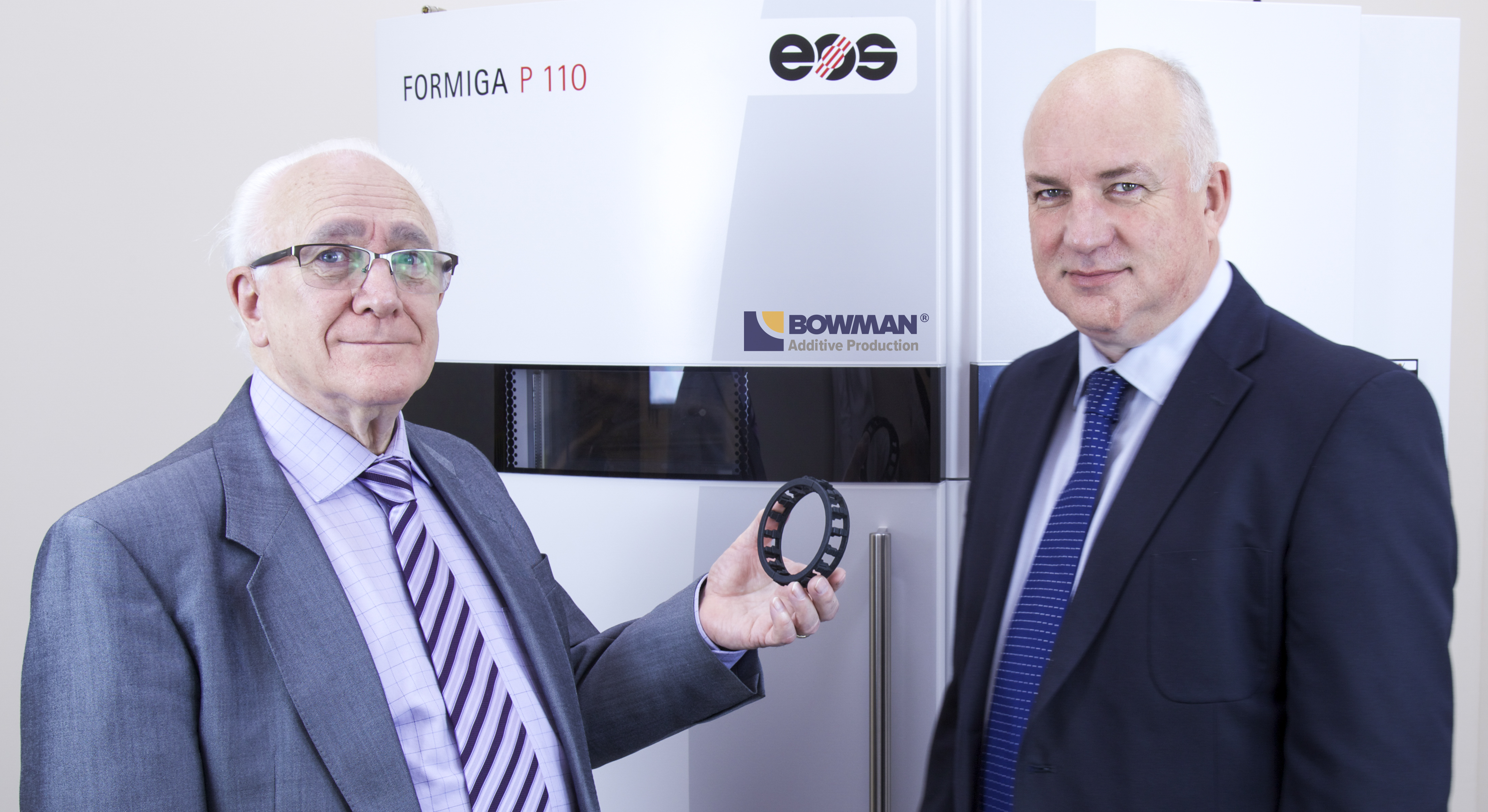 Hancock pictured holding a new 3D-printed component, along with Paul Mitchell, Bowman's managing director
Hancock pictured holding a new 3D-printed component, along with Paul Mitchell, Bowman's managing director Bearings have changed gradually over the years without deviating from the original concepts. The latest move has come from a small player in this vast industry: Bowman, a company run by its chairman, Paul Hancock, a lively 80-year-old who retains an enthusiasm for thinking differently. Hancock says of the multiple projects he is working on: “If everything works out as we plan, we could double or triple our sales in the next few years.”
Aided by a small technical team Hancock has looked afresh at how to make important components in bearings, called cages. Cages house the rollers (sometimes replaced by balls) that usually feature in bearings and hold them in position, adjacent to a moving shaft. In Bowman’s new design, the cages are made from tough engineering plastic rather than metal. Small metal inserts embedded in the cages withstand the rubbing of the rollers generated by rotation and so absorb the loads carried by the overall structure.
“We examined how cages had evolved over the years and set out to improve them with a mix of basic engineering principles and new technology,” says Hancock.
The crucial change here has been the adoption in recent years of 3D printing, also called additive manufacturing. In 3D printing, machines based on advances in electronic, laser technology and chemistry build up complex shapes from plastic or metal.
The process offers new ways to make parts in limited volumes, greatly reducing the lag between design and production. It can also provide a way to make components using materials or in shapes that would otherwise be impossible to fabricate.
Bowman’s new design is the result of focusing on relatively small areas of the bearings industry that are of little interest to the dominant players. The niche where Hancock sees the biggest immediate potential is in split bearings.
In these devices, the cages are made as two or more separate components that can be snapped together before use to make the complete ring. The design lends itself to the sort of big, bulky bearings seen in fields such as rolling mills in steel factories. Because few applications require such heavy bearings, the cages for split bearings are made in small volumes but to many variations. These characteristics, according to Hancock and his team, made them suitable for an effort at manufacturing with 3D printing, with the help of a new design.
++Paul+Hancock+chairman.JPG) Paul Hancock's company has taken a bold step towards radically improving ubiquitous engineering components that feature in virtually every machine incorporating rotary motion
Paul Hancock's company has taken a bold step towards radically improving ubiquitous engineering components that feature in virtually every machine incorporating rotary motion Bowman’s venture has not come cheaply. The company has spent £650,000 on two 3D printing machines – made by Eos of Germany and Hewlett Packard of the US – together with ancillary equipment. But now Hancock feels the design has developed sufficiently to make it suitable for general use – not just in split bearings but potentially in more standard types of bearing too.
“The new cage design brings many advantages,” Hancock says. “Making [metal] cages in the normal way involves the use of stamping tools to create the final metal shape. In our design, no tooling is needed. While making cages in the conventional manner takes 6 -18 weeks from design to production, with 3D printing we can cut the time just two days.”
The design also packs 40 per cent more rollers into the same size of cage. Bearings made this way last longer, use less energy and are easier to assemble.
The new ideas have generated a lot of interest among customers, says Hancock. However, he is aware that to persuade a significant number of companies to switch to the Bowman design is likely to be hard, especially since 3D-printed products often cost more than those based on older technologies. Even so, he expects the new designs will lead to a big jump in Bowman’s annual sales, which this year are expected to be about £10m. Staff numbers could, he says, double in the next few years from the 40 currently employed in Bowman’s development base in Oxfordshire and in a manufacturing unit near Dudley in the Midlands.
INVENTION
Laser-focus on cyclists’ safety
While Bowman rethought the principles behind a product that has existed for centuries, Emily Brooke came up with a completely new idea. It emerged from a four-year spell at Brighton University in southern England, where she studied product design.
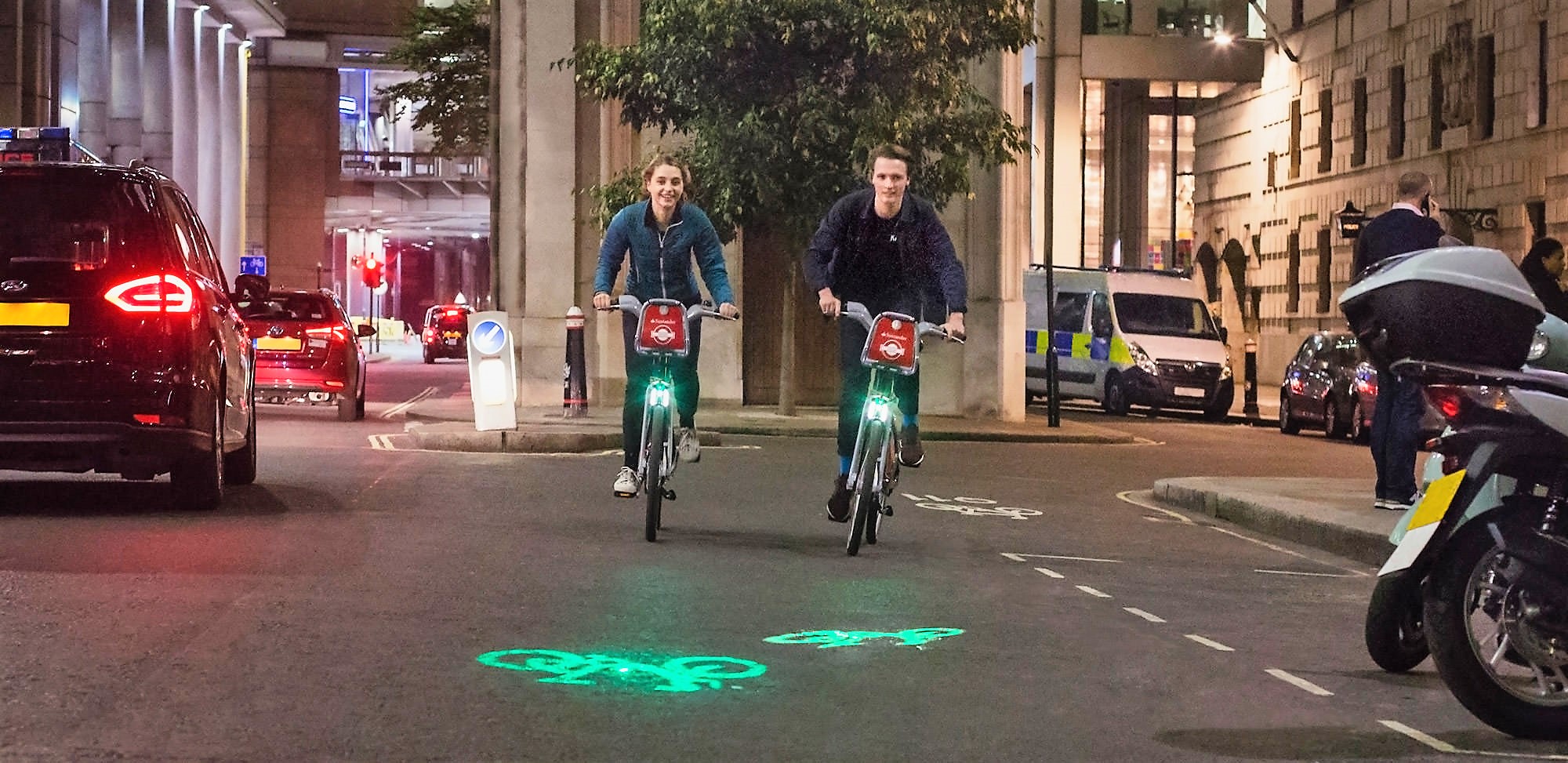
"I wanted to discover the biggest problem facing cyclists, and find a way to solve it,” says Brooke – who at 32 is at the other end of the age spectrum to Hancock but has a similar thirst for new ideas.
After discussions with a range of people – cycling enthusiasts, psychologists and safety experts – Brooke came up with the answer. “Almost 80 cent of cycling accidents are caused by a vehicle driver pulling out and hitting a moving bike, with driver unaware of its presence.” If she could find a way to warn drivers of the bike’s approach in a way that conventional cycle lights failed to do, this this would be a real advance.
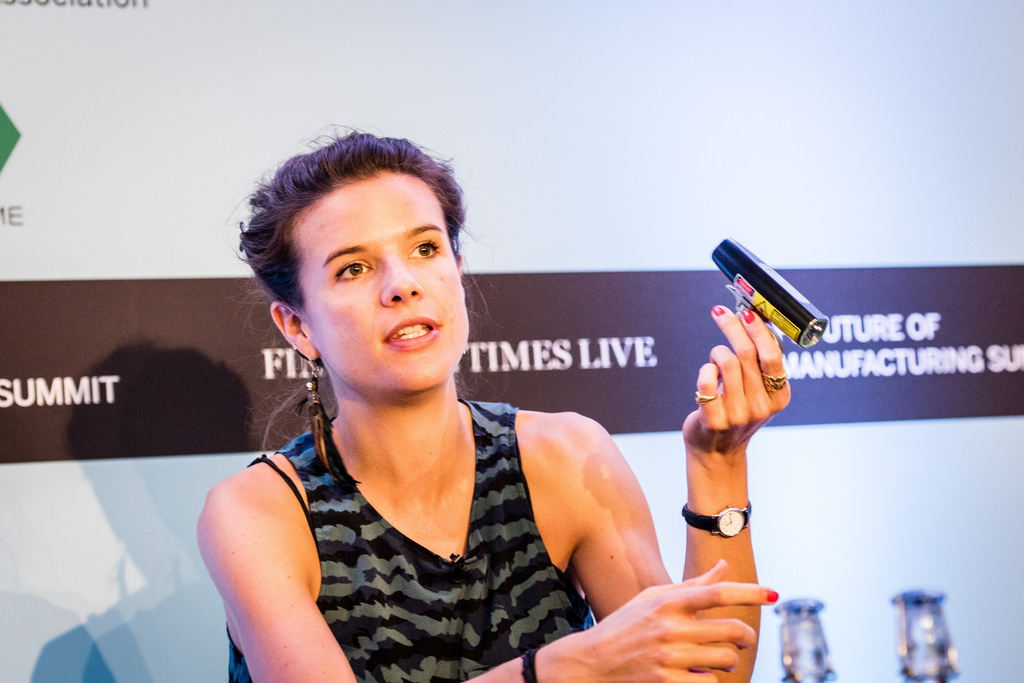
While the engineering presented a challenge, before she left Brighton in 2011 Brooke had created the basic design for a product – later called Laserlight – that shone an image of a bike onto the road. The image was visible six metres ahead, advertising the rider’s presence. In 2012 Brooke, pictured above, started her company, Blaze, in a small workshop in London.
But there was more to Laserlight than just the design. Making it was extremely hard, requiring 180 components, many of them sourced from China, with final assembly subcontracted to companies in the UK or Asia. The system had to be extremely rugged and able to withstand heavy rain, for example; it had to be close to 100 per cent reliable; and it had to look good.
Brooke says: “In our first year of production, I made five trips to China [to check out production]. While the design and development of our products is done in London, components come from a number of places. We use Japanese batteries, some electronic parts are Japanese or Korean, the laser is German and some of the optical components are Taiwanese.”
Brooke is particularly proud of the Laserlight’s aluminium casing. “It’s a 13-step process - casting, post production, a bit of CNC [machining], diamond-cut edges - beautiful but complex,” Brooke says.
Brooke’s approach may be partly the result of the mix of academic topics she’s studied. “At school I liked science. I was regarded as being unusual because I was a girl who was good at maths and physics. But I also loved art. I was always interested in finding ways to be creative.”
She started a physics degree at Oxford University but dropped out after a year, studied fine art at a Wiltshire college and then enrolled at Brighton. Brooke also squeezed in short spells at the Politecnico di Milano School of Design and Babson College in Massachusetts, where she studied entrepreneurship.
The Laserlight remains Blaze’s core product, selling for about £125, and shipped to more than 60 countries. The company has moved into other fields of lighting for bikes and recorded sales of just over £1m in 2017/18. Blaze has received £9m in investments and employs 25 people, mostly involved with design, development and marketing.
.JPG) Brooke runs her company from a small workshop in London which concentrates on design and development
Brooke runs her company from a small workshop in London which concentrates on design and development One coup was a contract with the London’s bike sharing scheme sponsored by Santander under which Laserlights and other Blaze lighting products are fitted on all of the scheme’s 12,000 bikes, manufactured by the UK cycle maker Pashley.
In a bold move, Blaze has set out to become a force in “internet of things” technology – using what it calls its “future data platform”. This will amount to a small gadget fitted to the bike backed up by powerful computing systems.
The platform will gather data from sources including satellite mapping systems, sensors on lampposts or new generations of driverless cars and instruments on the bike itself such as accelerometers and atmospheric sensors. In this way the bike will be turned into a moving collector and transmitter of information, capturing insights into such things as accidents and near misses, the incidences of potholes and changes in environmental pollution.
“We want to use connectivity to monitor overall journey quality and create a ‘smart bike’,” says Brooke.
COLLABORATION
Surgical robots built on a “blending” approach
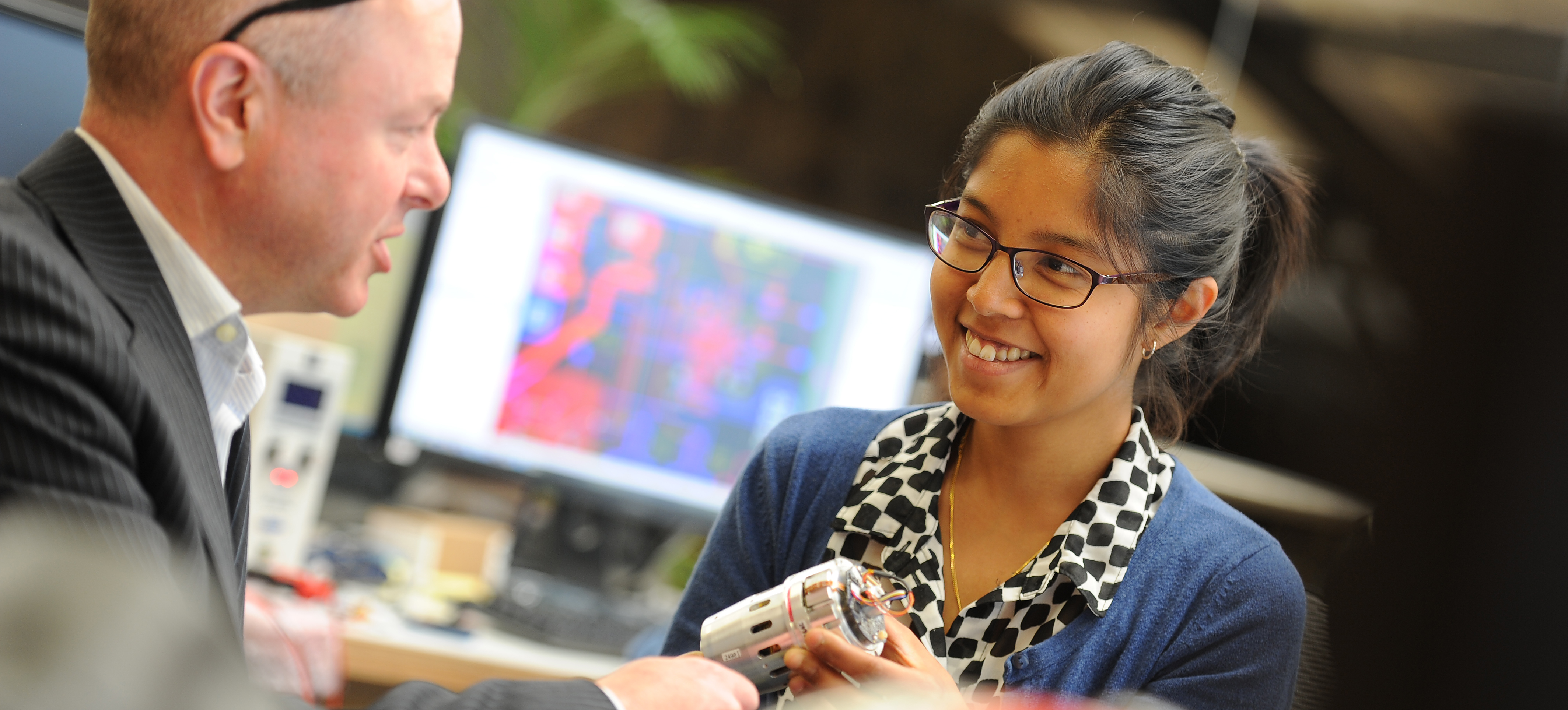 Two members of CMR's engineering development team - Christopher Roach and Nikki Phoolchund - are pictured here working to create a new medical robot
Two members of CMR's engineering development team - Christopher Roach and Nikki Phoolchund - are pictured here working to create a new medical robot Almost all breakthroughs require input from different contributors, either spread around the world or concentrated in a small area. But few businesses demonstrate this better than Cambridge-based CMR Surgical, which makes medical robots – machines that help surgeons carry out intricate laparoscopic (keyhole) procedures in hard-to-reach areas of the body.
CMR’s collaborative approach to developing new ideas is in evidence at many other Cambridge businesses, often thanks to the influence of the late Gordon Edge, a notable entrepreneur from the city.
The robotics company has emerged from the confluence of science and business thinking that has made Cambridge one of the world’s leading centres for technology-based enterprises. Four of the five people who founded CMR in 2014 worked for Sagentia, one of several big technology consultancies in Cambridge that specialise in pooling ideas and turning them into commercial ventures, run either as start-ups or within existing groups.
Sagentia is among four consultancies in Cambridge – the others being Cambridge Consultants, TTP and the technology arm of PA Consulting – either set up or strongly influenced by Edge, an entrepreneur who died in 2013 but left his mark on many local businesses.
In 1983 Edge set out his approach: “The idea that someone comes along and invents, say, a jet engine and that everything follows from this is just a lot of eyewash. This may once have been the chain of events, but it is no longer so. Innovation is a management tool and a team effort. If only people would accept this, we would all be a lot better off.” He followed this principle at all his companies, forming teams of scientists and engineers that worked across multiple disciplines, developing new concepts by blending different technologies.
CMR pursues a similar strategy. Martin Frost, chief executive, who previously had the same role at Sagentia, explains: “We [the founders] all worked in different areas of technology and business. Along the way we identified medical robots as a field where we could bring together different disciplines to create a product significantly better than what exists now.”
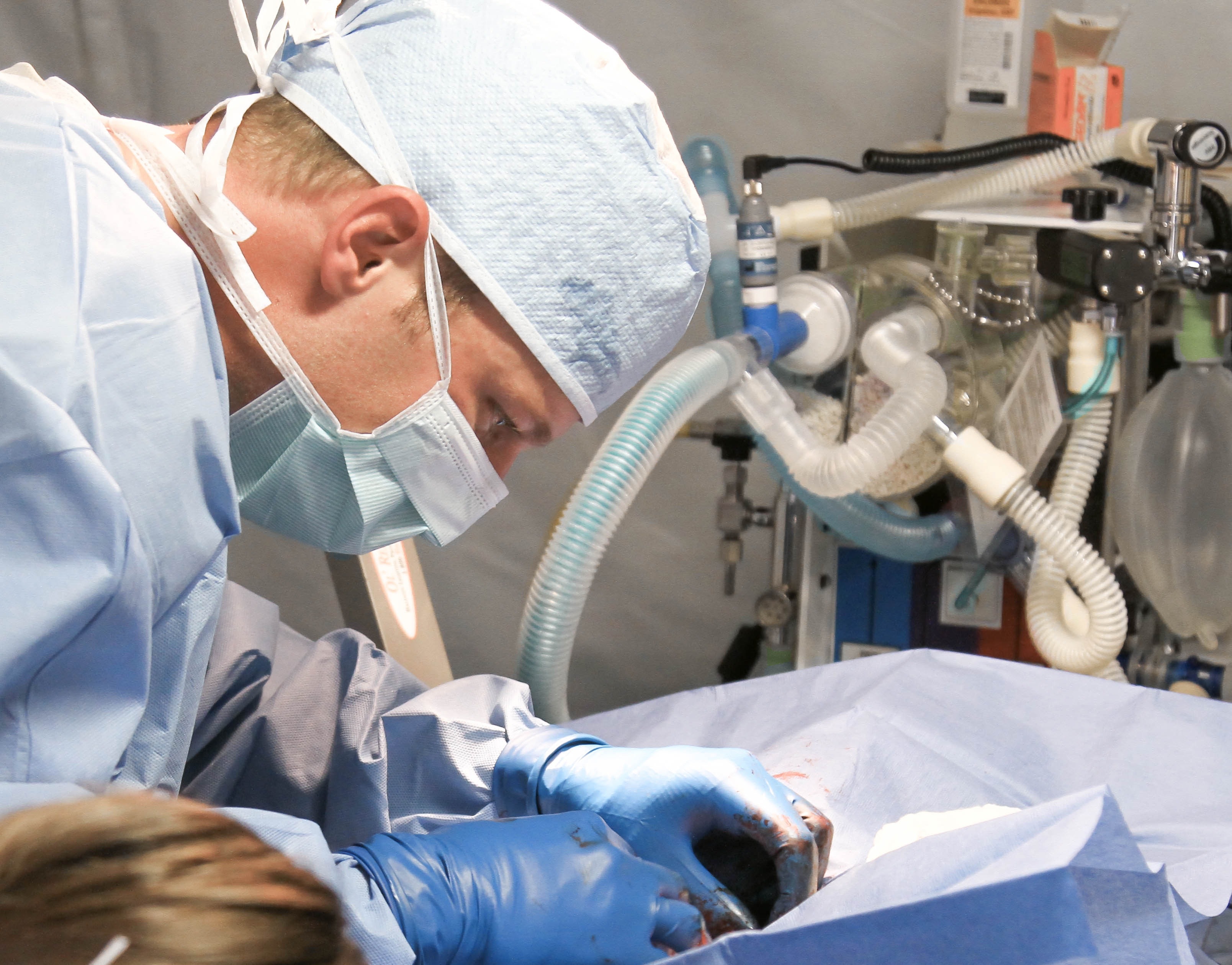
Key technologies behind CMR’s Versius robot system –due to be unveiled later this year – include electronics, software, materials, sensors and biomedicine. The company is backed by nearly £40m in investments and has a staff of about 190, two thirds of them working in development and with an average age of 30.
Rather than working autonomously, medical robots are guided by surgeons to perform jobs that are difficult or impossible using normal medical interventions. Mark Slack, head of gynaecology at Addenbrooke’s Hospital, Cambridge, and the only member of the five-strong group behind CMR not to have worked at Sagentia, points to the benefits of keyhole surgery. Due to much smaller incisions, patients recover faster, while surgeons can work in tricky areas of the body. “But [such non-invasive surgery] is difficult. Many surgeons can’t do it. So medical robots are needed to help them,” says Slack.
While full details of Versius have yet to be released, it is a set of mechanical arms and instruments that surgeons and other medical staff can operate using a console by the patient’s bedside. “We feel we can offer something new to hospitals – a small, versatile, agile machine – that can bring the advantages of laparoscopic procedures to more people,” says Frost.
Versius can guide instruments through “ports” measuring just 5mm in diameter. While most components of the machine will come from suppliers around the world, assembly will be carried out at CMR’s Cambridge HQ.
The company will by not have the field to itself. Several other larger players in medical robots are already in the market, with the stiffest competition likely from Intuitive Surgical of the US, maker of an established robot called da Vinci.
Nevertheless, Frost says he hopes to be recording global sales of “several hundred” machines a year within a few years, with each system likely to cost several million pounds. If CMR reaches its sales targets, its employee numbers could double in the next three years, says Frost.
CUSTOMISATION
Engineering new ways to make a dramatic impact
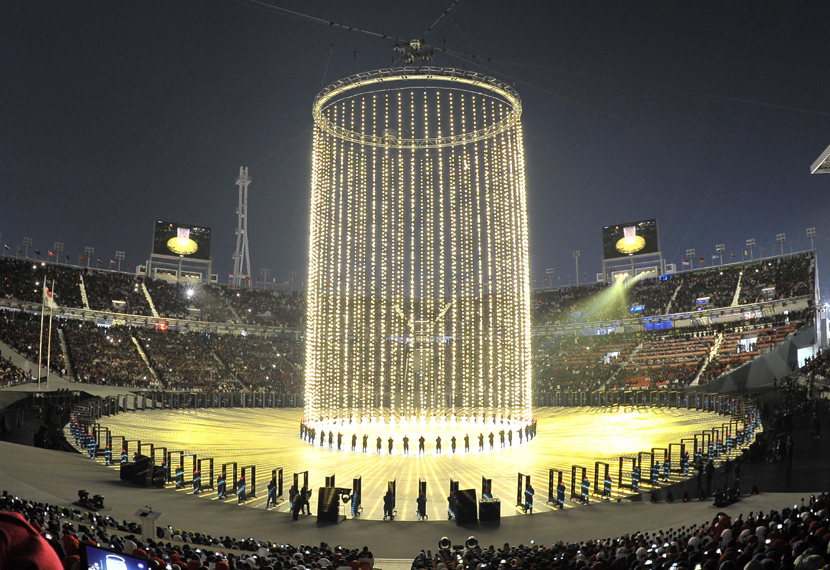
Chris Augur has a simple way of explaining the items his company manufactures. “Almost nothing conforms to the last product.” Augur is managing director of Yorkshire-based Stage One, which makes a bewildering range of objects from revolving stages for Wagner operas to sculptures to enliven buildings and outdoor spaces. With customers including pop groups, architects and theatres, Stage One employs people with skills in design, project management and construction.
The company created a number of complex pieces of equipment for the 2018 PyeongChang Winter Olympics, including the design pictured above that produced a spectacular pyrotechnic effect at the games' opening ceremony.
Manufacturing lies at the heart of the business, with almost two-thirds of the 185-strong staff working in various area of production, but Stage One’s approach is guided by the bespoke nature of its products. Naturally, the creativity that this requires must be tempered with business discipline. “The people we employ must be happy to work with systems and procedures that allow us to take on a complex brief and perform this to the satisfaction of the client,” says Augur, a former cabinet maker who started at the company in 1996 with nine employees.
In recent years Stage One has started an ambitious scheme to train young apprentices, helped by a close link with York College, a local further education institute. “We’ve been taking in seven trainees a year,” says Augur. “We have had a lot of interest from young people in what we have to offer. We appeal to people who like doing practical things.”
Augur further describes the characteristics he is seeking from the people who join the business. “They have to be interested in translating ideas from a drawing or a design into something that is capable of stunning an audience. They may like to do things differently. Nine out of every ten items we create have probably never been made before.”
Craft-based skills in established fields such as woodworking, metalwork and painting are vital. But Stage One has also embraced modern machinery, including computer-aided design and five-axis machine tools. “I am a strong believer in automation because I feel it helps us to do our jobs better,” says Augur.
Last year Stage One had sales of £23m, 80 per cent of which came from exports. Among recent projects has been a £1.8m commission to create Android Works, a series of “experiential environments” at a conference for the mobile communications industry in Barcelona. The project – where the client was BrandFuel, a London based design and branding company – involved building eight work and leisure areas decorated and finished differently, with a range of special effects such as lighting systems.
The company has worked on projects at eight Olympic Games. Its designs have included an elaborate cable-based system – to create the illusion of flying objects – that was a centre piece of the 2018 Winter Olympics in PyeongChang, South Korea. Stage One was also the manufacturer of a highlight of the 2012 London Olympics: an elaborate cauldron structure comprising 4,000 components, designed by the UK’s Thomas Heatherwick, that gradually unfolded during the final stages of the games’ inauguration event watched by 900m TV viewers.
.jpg) Stage One uses a range of processes to make its products, from the latest automation systems to manual techniques involving craft skills
Stage One uses a range of processes to make its products, from the latest automation systems to manual techniques involving craft skills Another spectacular creation was a stage set for the Prodigy pop group, an act famed for its energy and aggression. The brief required four large World War Two themed searchlights and three TV towers, all manufactured in lightweight aluminium, that could be packed away and reassembled on tour. The design featured LED-based searchlight units, complete with realistic looking “barbed” wire (made from steel but with plastic barbs) and finished with rust-effect paint treated to make it glow in the dark.
CONSOLIDATION
Why the company that reinvented touch sensors had to reinvent itself as well
.jpeg) Sarah Dempsey, a development scientist at Peratech
Sarah Dempsey, a development scientist at Peratech Not every technological project goes to plan. Sometimes the initial route to commercialising an idea turns out to be too difficult, requiring a change of approach. The story of Peratech, a company based near Darlington, northern England, offers a perfect illustration.
Peratech has developed a series of chemicals which – together with techniques that allow them to be turned into products – produce surfaces that are highly sensitive to touch. The materials have been named quantum tunnelling composites (QTCs). While the people behind the Mark II version of Peratech are yet to show that the company can succeed, they have high hopes of eventually making QTC a key “enabling technology” behind a huge number of everyday products.
Unlike conventional touch sensors – normally based on “capacitive” technology – Peratech’s devices can work under water and are sensitive to touches from a gloved hand.They function when overlaid with a surface such as wood, plastic and metal, making them potentially ideal for use in products ranging from industrial equipment to toys.
The materials are based on mixes of powders, liquids and solutions. Some of these can be “printed” like inks in detailed patterns on surfaces. The material mix is sensitive even to small forces, which register as an electric current.
“You could engineer these materials into the steering wheel of a car to allow drivers to operate instruments completely safely, without lifting their fingers,” says Jon Stark, the company’s chief executive. “We can see the game-changing potential of creating skin-like sensing in prosthetic devices and human exoskeletons.”
The US-born Stark adds that thanks to the production processes behind QTC, the sensors can be fabricated into many shapes and sizes, possibly with the help of new generations of 3D printing machines. “We can print what amounts to a ‘smart button’ on any surface of many sorts of materials. There’s virtually no constraint in physical dimensions.”
While the ideas seem impressive, the route to give the company a solid foundation has been rocky. Peratech was started in 1996. The founder was scientific entrepreneur David Lussey, who teamed up with scientists at the University of Durham to create some of the first QTC materials.
Lussey planned to build a business focused on licensing. A partner such as a maker of touch screens in computers would use would be allowed to use Peratech’s ideas in its own production, rewarding the UK company with a mix of upfront fees and payments based on sales. To start with, the plan seemed to work. Companies such as Apple were keen to license the UK company’s technology.
However, this initial effort ended in failure. After financial difficulties Peratech entered administration in 2013, only to re-emerge a year later with a new strategy and new owners and managers including Stark, who came to the UK from the US electronics industry. (Lussey – who left Peratech in 2014 - has not given up on QTC technology. He is making a new, independent effort to make money from the technology through a new company, Quantum Technology Super Sensors.)
The main shareholder in the “new” Peratech is the German chemicals group Merck, which has a successful record in investing in the UK. In the 1970s Merck, through its UK subsidiary BDH, took on the development of a new form of liquid crystal technology originating at the Royal Signals and Radar Establishment in Malvern, Worcestershire. Afterwards, Merck helped to turn liquid crystals into the dominant technology behind most sorts of digital display.

Merck has backed Stark’s new strategy. To get its sensors into commercial use Peratech has abandoned licensing in favour of becoming a straightforward manufacturer. “We decided we wanted to make products,” Stark says. “We create modules [based on sensors] that customers can use and create the software that make the products work.”
While the company’s sales are still thought to be low – Stark does want to reveal the numbers – he says its sensors have formed part of about 1m individual devices including smart phones, electronic whiteboards, handheld drills, computer mice and medical diagnostic systems. The names of its customers remain under wraps.
With most technical development carried out in the UK, manufacturing is left to partners working under contract in South Korea and China. Peratech’s products are then integrated into a variety of consumers and industrial goods made and sold by the final customer. Of the company’s 40 staff, 25 are in the UK, with the rest in development and support roles in the US, Sweden, China and South Korea.
Much of Peratech’s work is based on talking to the businesses behind the final products that the sensors become part of. This is to ensure the most suitable sensor systems are developed for a specific application. In this way, Peratech functions as a mix of manufacturer and a consultancy. Stark explains: “We realised that if we just sold [products], we put the onus on customers to figure out how to turn them into the sensing tools for their devices.” He says Peratech had to find a way to become “accountable for integrating our technology into people’s devices”.
